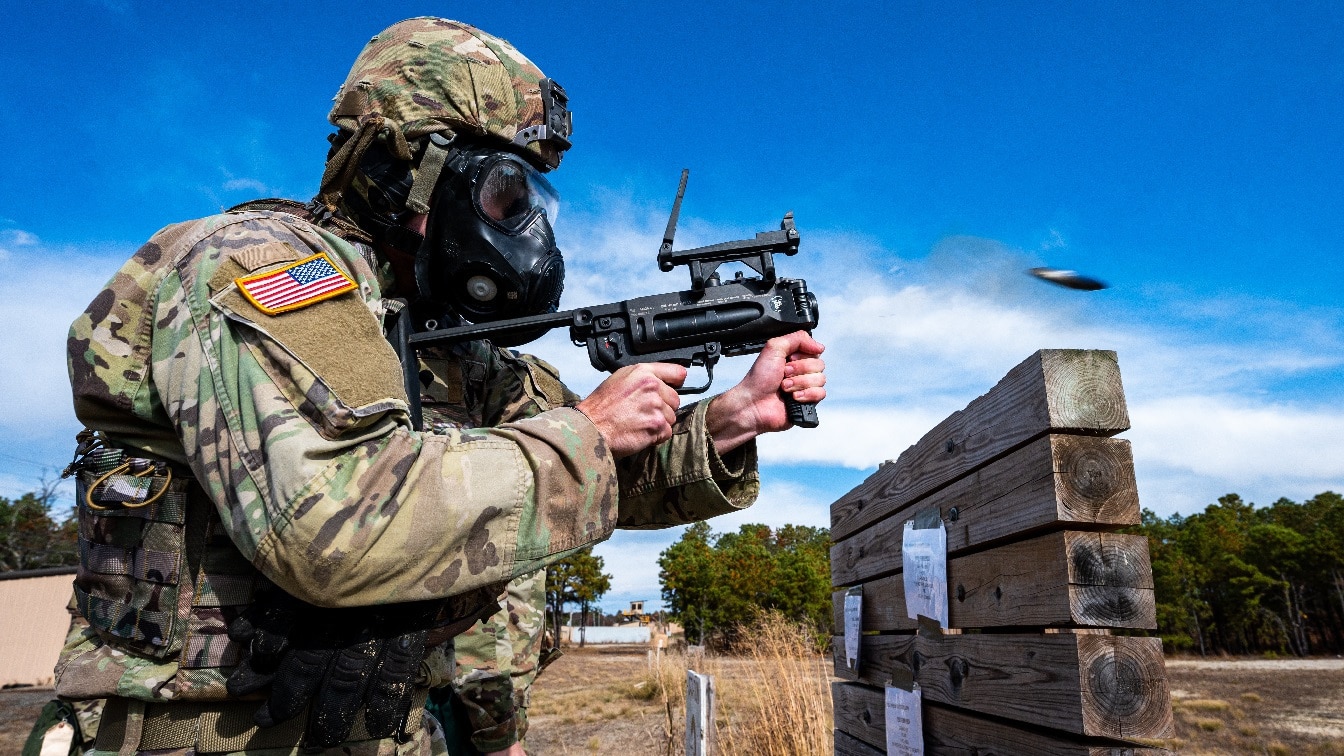The M320 Grenade Launcher (a 5 Minute Explainer) The first thing you notice about the M320 grenade launcher used by the U.S. Army is its compact size and shape. It’s a stand-alone model but it can be slung or holstered so the soldier or marine can still carry an M4. This grenade launcher is meant to replace the M203 that is attached under the barrel of M4s.
The below is a short 2-minute primer of everything you need to know on what makes the M320 truly unique.
Does It Remind You of an Uzi?
The M320 is a departure from the M203. It sort of resembles an Uzi submachine gun. The M320 still fires 40mm grenades. It started out being assigned to Army Special Forces and has trickled down to regular infantry units. The Army adopted the M320 in 2008, and the Marine Corps took it in 2017. The Army ordered 71,000 and the marines got 7,000. This hasn’t been cheap for the Army as it has spent $270 million on the weapon and its accessories over the years.
Easy to Load with Long-Range Grenades Available
The main advantage the M320 has over the M203 is the swing-right action that enables the M320 to load easier and fire longer rounds, including Raytheon’s 40mm laser-guided grenade that has an ultra-long-range. This grenade is designed with potential force-on-force battles with Russia and China in mind.
Compact and Powerful
The M320 weighs around seven pounds with its stock. The Center for Army Lessons Learned believes that it should not be mounted under an M4. The added weight will “unbalance the M4.”
The M320 also has an easy to employ safety. It’s 20 inches long with the extractable stock extended – that is still quite compact for such a powerful weapon. The range is 150 meters at a point target and 350 meters at an area target.
The single-shot weapon has a day/night sight with an elevation adjuster and a laser range finder with seven-times magnification.
Watch Out for Friendly-Fire
The M320 is not designed to be fired close to friendlies who are engaged in a firefight. The danger close radius is 165-meters. Grenadiers will fire the fragmentary high-explosive rounds at enemy personnel who are concealed or out in the open, so you don’t want to launch a grenade that could jeopardize your own forces and cause fratricide. It’s instead better to use the M4 when friendlies are close to the blast radius of the M320.
Diverse Uses for Grenades
The High-Explosive Dual Purpose round can be fired at lightly-armored vehicles. There are also pyrotechnic and spotting grenades. The loadout is usually 13 grenades with a bandelier. Nine high-explosive rounds is a common load with four smoke or illumination grenades.
The Center for Army Lessons Learned offers the following advice for users: High explosive rounds should be used to “flush an enemy out of cover and to fix the enemy in place.”
These tactics and techniques make the M320 so valuable for an infantry platoon. The combination day/night sight and laser range finder makes it more accurate than the barrel-mounted M320. However, grenadiers used to the M203 had a learning curve to adjust to a stand-alone grenade launcher. Those with M79 experience in special operations forces units likely adjusted easier.
All in all, the M320 is a versatile weapon that makes infantry squads more agile and powerful.
Now serving as 1945’s Defense and National Security Editor, Brent M. Eastwood, PhD, is the author of Humans, Machines, and Data: Future Trends in Warfare. He is an Emerging Threats expert and former U.S. Army Infantry officer. You can follow him on Twitter @BMEastwood.

